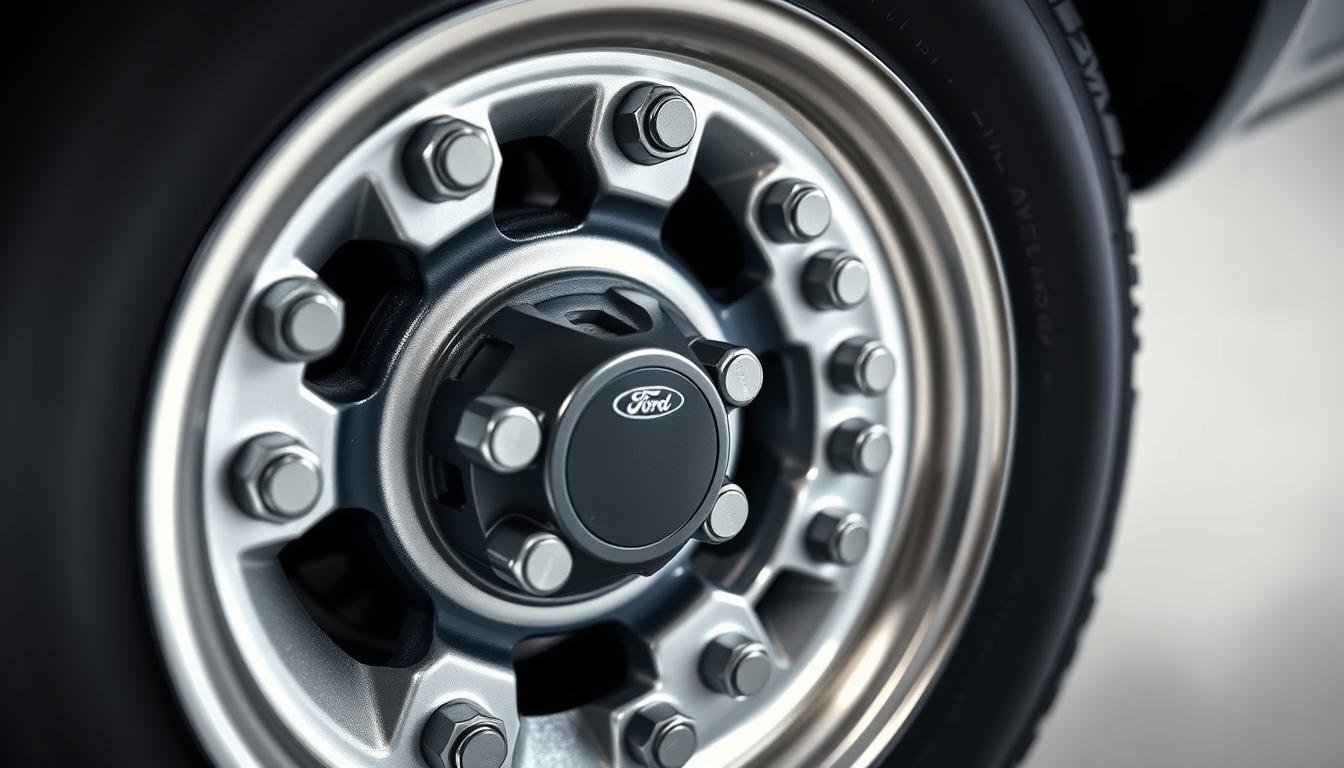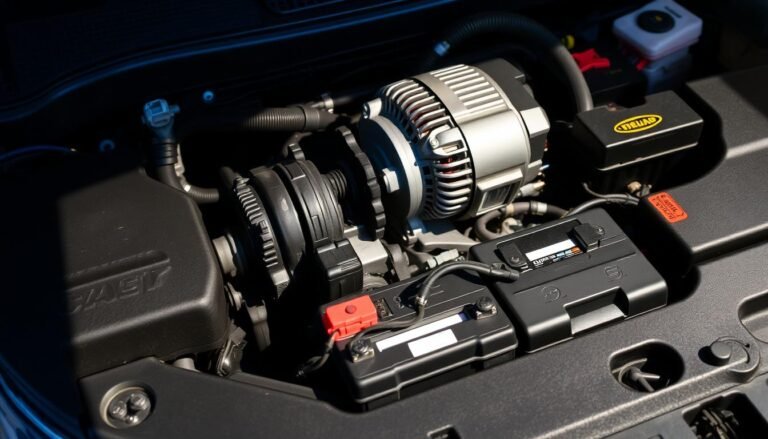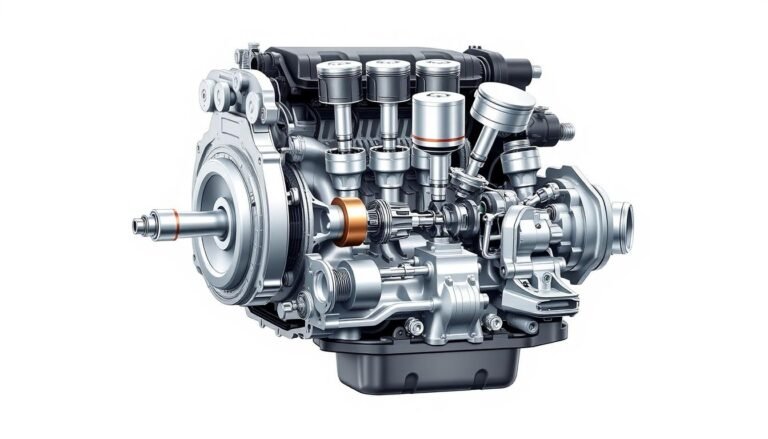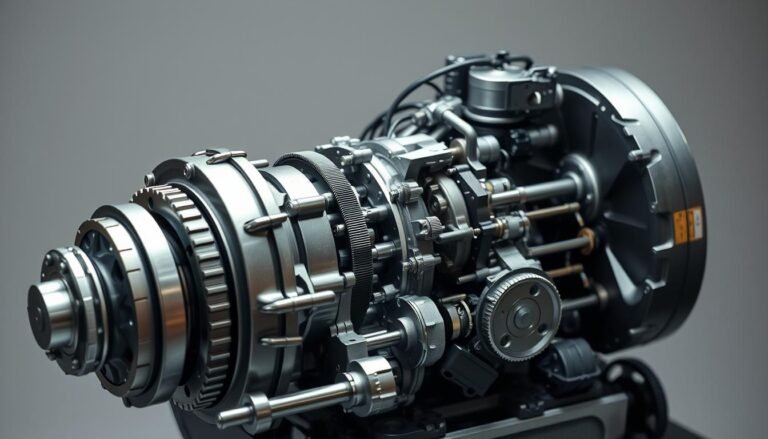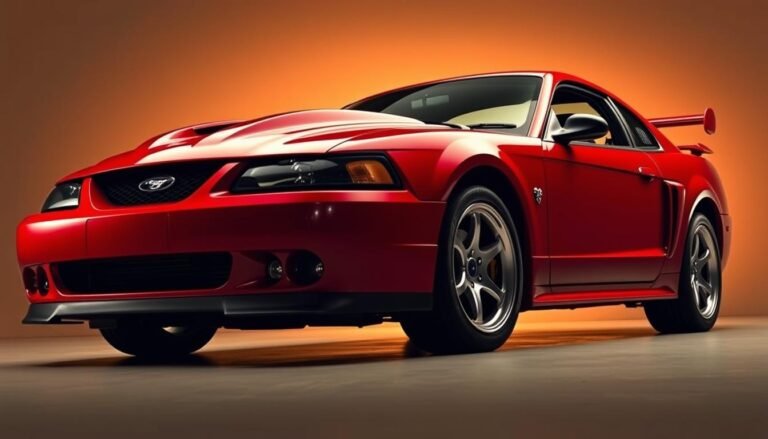How To Measure Ford Ranger Wheel Bolt Pattern? Exclusive 9 Guide
What is the Ford Ranger wheel bolt pattern? It’s a key detail that makes sure your wheels fit right. This improves your truck’s performance and looks
Knowing the Ford Ranger wheel bolt pattern is vital for the right rim fitment. Whether you’re swapping out your wheels or getting new ones, this knowledge is key.
It helps you make smart choices for your vehicle. In this detailed guide, you’ll discover how to measure wheel sizes correctly.
You’ll also learn about bolt pattern specs and find wheels that match your Ford Ranger.
We’ll cover the differences between aftermarket and OEM wheels. This way, you can choose what’s best for your truck.
This guide aims to make things easier for you. You’ll be able to boost your Ford Ranger’s looks and performance with confidence.
What is The Ford Ranger Wheel Bolt Pattern?
The wheel bolt pattern is key to making sure your Ford Ranger’s wheels fit right. The standard pattern is a 5-lug, 4.5-inch setup, known as 5×4.5.
This means there are five holes for the lugs, with a 4.5-inch gap between opposite lugs. Knowing this pattern is vital for picking the right wheels.
It’s worth noting that different Ford Ranger models might have slight changes in specs. Knowing your model year can help a lot in finding the perfect fit for your wheels.
Measuring Your Ford Ranger Wheel Size
Knowing how to measure your Ford Ranger wheel size is key for picking the right tires and wheels. Ford Ranger wheels usually range from 14 to 18 inches in diameter.
The width can be between 6 to 9 inches. Make sure to measure from the bead seat, not the outer edges, for accurate readings.
Importance of Wheel Diameter and Width
The right wheel diameter and width are vital for your Ford Ranger’s performance. A wider wheel can improve stability and handling.
The diameter must match your vehicle’s specs to prevent clearance or ride quality issues.
Learning Backspacing and Offset
Backspacing is important for how the wheel fits with the suspension and fenders. It’s the distance from the mounting surface to the wheel’s rear lip.
For Ford Rangers, a standard backspacing is about 4.5 inches. Adjusting this can change how the wheel looks and performs.
When making changes, make sure the wheel size and width fit well. This ensures the wheel looks good and works right.
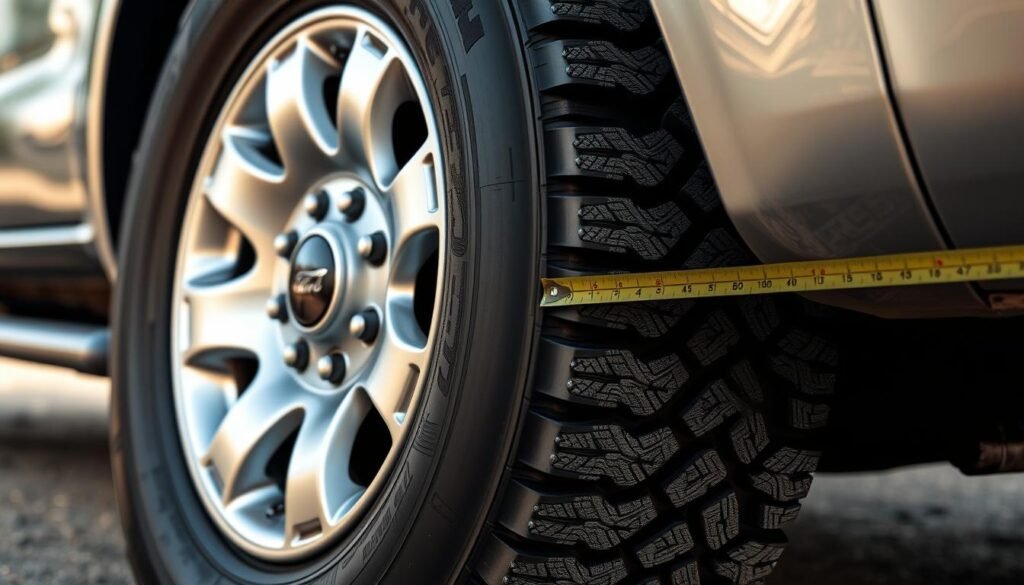
Ford Ranger Wheel Bolt Pattern Specifications
The Ford Ranger has specific wheel bolt patterns for a proper fit. The standard pattern is 5×4.5, meaning five lugs spaced 4.5 inches apart.
Knowing these specs helps pick the right wheels for your truck. The wheel sizes for the Ford Ranger range from 14 to 18 inches in diameter.
The width varies from 6 to 9 inches, depending on the model year. There are differences between models from 1983-1997 and those from 1998 and later.
The center bore size is also key, ranging from 70.3 mm to 70.5 mm. This size is important for the safety and integrity of your wheels.
| Model Years | Bolt Pattern | Wheel Diameter (inches) | Wheel Width (inches) | Center Bore (mm) |
|---|---|---|---|---|
| 1983-1997 | 5×4.5 | 14-16 | 6-7 | 70.3 |
| 1998-Present | 5×4.5 | 15-18 | 7-9 | 70.5 |
By knowing these specs, you can choose the best wheels for your Ford Ranger. This ensures your truck performs well and stays safe on the road.
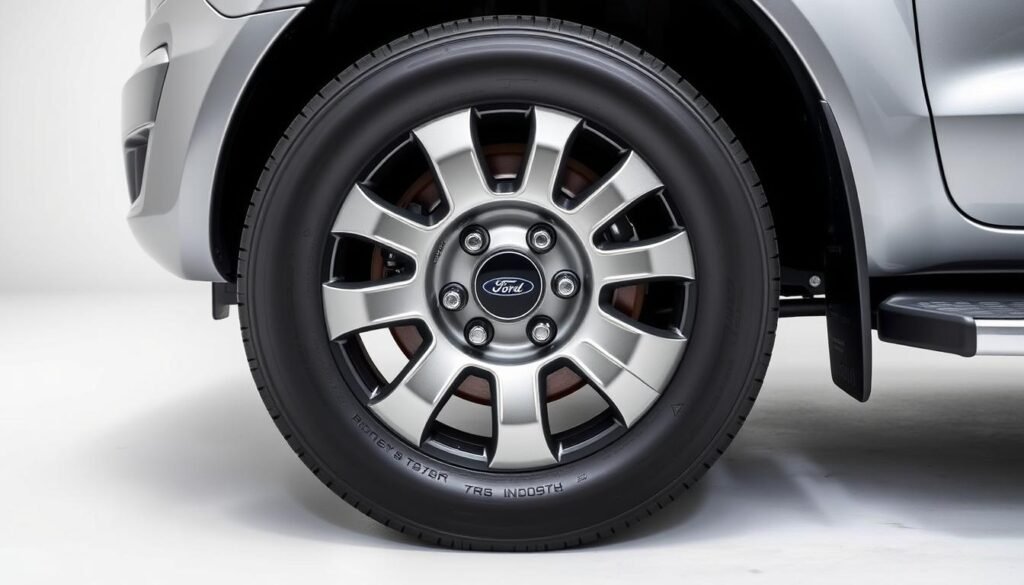
How To Measure Wheel Bolt Patterns?
Measuring your vehicle’s wheel bolt patterns is key to ensure new wheels fit right. This guide will help you measure 5-lug patterns accurately.
It’s important to avoid mistakes with ford ranger wheel studs. Knowing the right methods can save you time and trouble when picking the right wheels.
5-Lug Measurement Technique
To measure a 5-lug bolt pattern, first find the lugs’ positions. The main measurement is from one lug’s back to the third lug’s center.
Follow these steps for precise results:
- Start by measuring from the first lug’s back edge to the third lug’s center.
- Make sure your measuring tool is straight and doesn’t touch other wheel parts.
- Write down the measurement for choosing wheels that match your ford ranger wheel studs.
Common Mistakes in Measurement
Mistakes in measurement can cause big problems, so be careful. Here are common errors to avoid:
- Don’t measure from the wrong points on the wheel, like the outer edges.
- Always measure to the exact center of the lugs to get accurate results.
- Double-check your measurements to avoid picking wheels that don’t fit.

Compatible Wheels For Different Ford Ranger Models
It’s important to know which wheels fit your Ford Ranger. Each model year has its own needs. Choosing the right wheels makes your truck look and drive better.
Wheels For 1983-1997 Ford Rangers
From 1983 to 1997, Ford Rangers had a 5×4.5 bolt pattern. They could handle wheels up to 15 inches wide. Here’s what to look for in wheels for these models:
- Bolt Pattern: 5×4.5 inches
- Maximum Wheel Width: 15 inches
- Recommended Wheel Diameter: 14 to 15 inches
Wheels For 1998-Present Ford Rangers
Starting in 1998, Ford Rangers got a new look with more options. They have bigger wheels and different backspacing needs. Here’s what you should know:
- Bolt Pattern: 5×4.5 or 5×5.5 inches (depending on trim)
- Maximum Wheel Width: Varies by configuration
- Recommended Wheel Diameter: 15 to 18 inches
Ford Ranger Aftermarket Wheels and Their Fitment
Choosing the right aftermarket wheels for your Ford Ranger can greatly improve its performance and look.
You need to consider how you’ll use the vehicle, like off-roading or just driving around.
Also, think about the wheel size and backspacing. Knowing these details helps you pick the best wheels for your Ranger.
Choosing The Right Aftermarket Wheels
Choosing the right wheels means looking at different designs that fit your needs. You might want rugged off-road wheels or sleek street designs for daily use.
Make sure the wheels you choose match your style and fit your Ranger well for the best performance.
Offset Considerations for Aftermarket Options
Offset is key in how your wheels fit your Ranger. A negative offset moves the wheel out, improving stability but might cause clearance problems.
On the other hand, a positive offset tucks the wheel in, which can help with handling but might affect the vehicle’s footprint.
Think about these factors carefully to avoid any issues with rubbing or other problems.
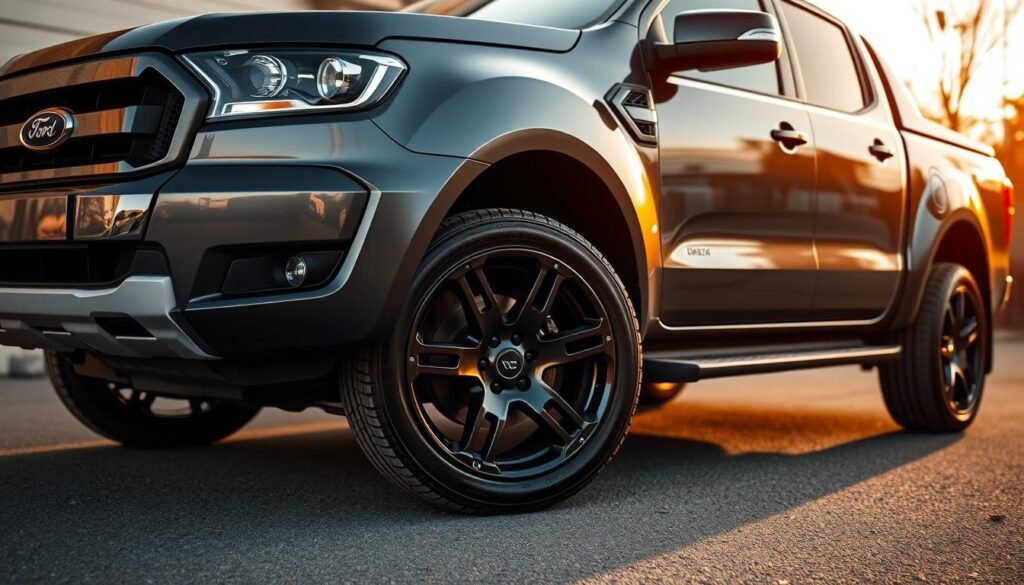
Ford Ranger OEM Wheels Overview
When looking for wheels for your Ford Ranger, knowing about OEM wheels is key. OEM wheels are made just for your vehicle, ensuring a perfect fit and performance.
They meet the manufacturer’s standards, which can greatly improve your driving experience.
Types of OEM Wheels Available
Ford Ranger OEM wheels come in many designs and materials. They fit different model years and trims. You can find:
- Steel Wheels: These are durable and strong, great for tough conditions.
- Aluminum Wheels: Lighter, they help save fuel and look sleek.
- Alloy Wheels: A mix of aluminum and metals, they’re strong, light, and stylish.
Comparison Between OEM and Aftermarket Options
Choosing between OEM and aftermarket wheels depends on what you need. Here are some main differences:
| Feature | OEM Wheels | Aftermarket Wheels |
|---|---|---|
| Fitment Guarantee | Perfect fit for factory specifications | Varies widely; must verify compatibility |
| Warranty | Often comes with manufacturer warranty | Warranties vary by brand |
| Performance | Designed for optimal performance and safety | Can offer improved performance but requires research |
| Customization | Limited design choices | Extensive customization options available |
Knowing these differences helps you choose wisely between OEM and aftermarket wheels. Each has its own advantages, letting you customize your Ranger to fit your needs and style.
Compromise Ford Ranger Wheel Studs and Lug Patterns
Wheel studs on your Ford Ranger are key for attaching wheels to the hub. The ford ranger lug pattern changes with model year.
But, most Rangers have a 5-lug setup. This pattern fits many aftermarket and OEM wheels well. It’s vital to use the right torque when tightening lug nuts.
The recommended torque for a Ford Ranger is usually 95-100 foot-pounds. This ensures the wheels stay tight and don’t come loose while driving.
Not following the correct ford ranger lug pattern and torque can be dangerous. It might cause the wheels to come off. Checking your wheel studs often can spot wear or damage early on.
Knowing about your Ford Ranger’s wheel studs and lug patterns is key for safety and performance. Always check your owner’s manual for details specific to your model.
Using Wheel Adapters For Your Ford Ranger
Wheel adapters are key for customizing your Ford Ranger. They let you fit wheels with different bolt patterns.
This means you can choose from more wheels. But, it’s important to install them right for safety and performance.
Benefits of Wheel Adapters
Using a ford ranger wheel adapter has many benefits:
- It makes your wheels compatible with more aftermarket options.
- It lets you customize your wheel design for a better look.
- You can use wheels from other vehicles that fit.
How To Properly Install Wheel Adapters
To keep your wheel adapters secure, follow these steps:
- Take off the wheel studs and clean the hub for a good fit.
- Make sure the ford ranger wheel adapter lines up with the hub’s bolt pattern.
- Secure the adapters to the hub with the right torque.
Using a torque wrench is key for the right tightness. Remember to check the backspacing. It affects the wheel’s clearance and how it performs.
With careful installation, you’ll enjoy the full benefits of your ford ranger wheel adapter, ensuring a safe drive.
Ford Ranger TPMS Sensors and Wheel Compatibility
The Tire Pressure Monitoring System (TPMS) is key to your safety on the road. It warns you if tire pressure gets too low, helping avoid tire failures.
It’s important to make sure your new or replacement wheels work with your Ford Ranger’s TPMS sensors.
If they don’t match, you might get false warning lights and miss important pressure checks. Different Ford Rangers need different TPMS sensors to work right.
When you get new wheels, check if the TPMS sensors fit. This step helps avoid problems later and keeps your TPMS working well.
To get accurate readings, remember to:
- Check the sensor type your Ford Ranger model needs.
- Make sure the wheels have room for the TPMS sensors without blocking them.
- Look at the specs for both the wheels and sensors from the manufacturers.
Conclusion
Knowing the Ford Ranger’s wheel bolt pattern and fitment options is key for any owner. This guide helps you choose the right wheels for your truck.
Whether you pick OEM or aftermarket, understanding your truck’s needs is vital. It’s important to know how to measure wheel sizes and check compatibility.
This knowledge prepares you for upgrading your wheels. With the right tools and info, your choices will match your truck’s specs and your style.
By learning these guidelines, you’re ready to upgrade your wheels. This guide helps you find the perfect fit for your truck. It ensures your vehicle looks great and drives well.
FAQs
Q: What is the wheel bolt pattern for a Ford Ranger?
A: The Ford Ranger has a standard wheel bolt pattern of 5×4.5. This means it has 5 lugs that are 4.5 inches apart.
Q: How do I measure the wheel size of my Ford Ranger?
A: To find your Ford Ranger’s wheel size, measure the diameter from the bead seat. It’s usually between 14 to 18 inches. The width varies from 6 to 9 inches.
Q: What is backspacing, and why is it important?
A: Backspacing is the distance from the mounting surface to the wheel’s rear lip. It’s key because it affects how the wheel looks and performs.
Q: Are aftermarket wheels compatible with all Ford Ranger models?
A: Not all aftermarket wheels fit every Ford Ranger. Always check the bolt pattern, diameter, and offset to ensure they match.
Q: What are the differences between OEM and aftermarket wheels?
A: OEM wheels are made to fit perfectly and are reliable. Aftermarket wheels offer customization and performance but need careful selection for a good fit.
Q: How can I fit wheels with different bolt patterns using wheel adapters?
A: Wheel adapters let you fit wheels with different bolt patterns on your Ford Ranger. Make sure to install them securely with the right torque.
Q: Do I need to consider TPMS when choosing new wheels?
A: Yes, it’s important to check if your new wheels work with TPMS sensors. This ensures accurate tire pressure monitoring and avoids dashboard warning lights.
Q: What torque specifications should I use for my Ford Ranger wheel studs?
A: Always use the torque settings recommended by the manufacturer to secure your Ford Ranger’s wheels. This keeps them safe over time.

